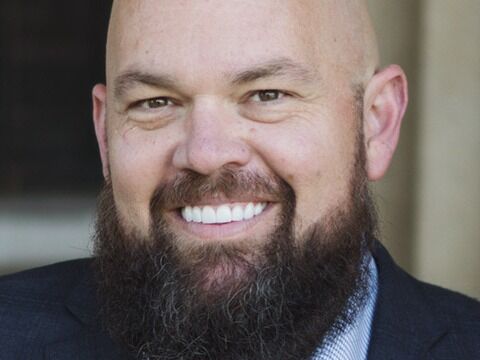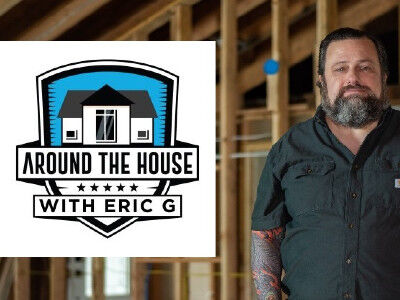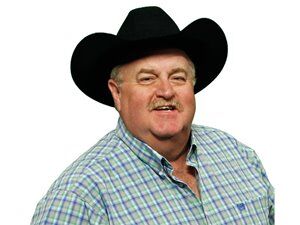Baby Safety Month: Your checklist for baby sleep safety
Lifestyle

Audio By Carbonatix
7:30 AM on Thursday, September 11
By Arin Schultz for Naturepedic, Stacker
Baby Safety Month: Your checklist for baby sleep safety
Your baby’s safety is a full-time job. It's a daily responsibility, a constant worry and the reason you second-guess almost everything. Baby Safety Month is celebrated every September, and it exists for that exact reason: to support families in making informed choices and creating safer spaces for their little ones.
This month is a moment to plan, pause, re-evaluate and feel empowered by the steps you’re already taking. Whether you’re setting up your nursery for the first time or fine-tuning your routine, Naturepedic offers evidence-backed tips to help you and your little one rest easier — because safer sleep isn’t just an annual campaign. It’s an everyday commitment.
In honor of Baby Safety Month, here is a checklist for safer baby sleep, from crib setup to sleepwear and everything in between.
1. Bed Sharing vs. Room Sharing
When your baby drifts off in your arms, it can be tempting to keep them close. Really close. But when it comes to safe sleep, how and where your baby sleeps matters.
According to the American Academy of Pediatrics (AAP), bed sharing is never recommended. No matter how careful or well-intentioned, bringing your baby into bed increases the risk of suffocation, entrapment and sudden infant death syndrome (SIDS). Even soft bedding, pillows or your own body can pose a danger to an infant who can’t yet move themselves to safety.
Instead, room sharing is the safest choice. Keeping your baby in the same room — but on their own separate, firm sleep surface — makes it easier to monitor them overnight while still protecting their space. The AAP recommends room sharing for at least the first six months and ideally up to one year.
In short: same room, separate surface. It’s a simple step that helps reduce risks and supports safer sleep from day one.
2. Nursery Do’s and Don’ts
Your nursery is where your baby will spend a significant portion of their early life. From sleeping to playing to growing, this space plays a big role in your little one’s safety and well-being.
Designing a safer nursery doesn’t have to be overwhelming. It starts with thoughtful choices and a few key principles that can help reduce risks and support your baby’s health. Here are some simple do’s and don’ts.
Do: Create a Childproofed Environment
From day one, it’s important to take steps that prevent hazards before they’re ever a risk. Install outlet covers and cabinet locks. Use soft padding on sharp furniture corners. Anchor bookshelves and dressers to the wall to prevent tip-overs. And make sure cords — whether for window treatments, monitors or lamps — are always well out of reach. Creating a childproofed foundation now means fewer surprises as your baby becomes more mobile later.
Do: Invest in Non-toxic Furniture
Your baby’s sleep space should be as clean and safe as possible, and that includes the materials it’s made from. Many conventional cribs, mattresses and changing tables can off-gas harmful chemicals like formaldehyde, toxic VOCs (volatile organic compounds) or flame retardants. Choosing third-party certified non-toxic products helps reduce chemical exposure during a time of rapid growth and development. Look for certifications such as GOTS, MADE SAFE, EWG Verified and GREENGUARD Gold, which verify that products meet strict health and safety standards.
Do: Maintain Proper Ventilation
Fresh air matters — especially in a nursery, where indoor air quality can have a direct impact on your baby’s health. Keep the room well-ventilated to support healthy breathing and reduce the buildup of indoor air pollutants. This can be as simple as opening a window when the weather allows or using an air purifier with a HEPA filter. Good airflow also helps regulate room temperature and keeps your baby more comfortable while they sleep.
Do: Place Your Baby on a Firm, Flat Sleep Surface
This is one of the most important safe sleep guidelines, and it’s backed by both the AAP and the Consumer Product Safety Commission (CPSC). Your baby should always sleep on their back on a firm, flat surface with only a snug-fitting crib sheet. The sleep area should be free of pillows, blankets, stuffed animals or other objects that could obstruct breathing. And although soft, plush surfaces might feel cozy to us as adults, for babies, firmness is key.
Don’t: Overheat the Room
Babies aren’t great at regulating their body temperatures, which makes overheating a real concern and a suspected risk factor for SIDS. The AAP recommends keeping the nursery at a comfortable, consistent temperature between 68 degrees and 72 degrees Fahrenheit. That may feel slightly cool to you, but it’s ideal for sleep. Instead of cranking up the heat or piling on blankets (which are always a no-no, opt for breathable sleepwear and adjust wearable layers as needed.
Don’t: Use Fragrance or Chemicals
Your baby is still developing, and their lungs, skin and immune system are especially sensitive to environmental exposures. Scented candles, plug-in air fresheners, and conventional cleaning products can introduce VOCs and other chemicals into the air. These substances may irritate your baby’s respiratory system or contribute to poor indoor air quality over time. Instead, stick to fragrance-free, non-toxic or natural cleaning products in your nursery. Your nursery doesn’t need to smell like lavender or lemon to feel fresh — clean air is the safest choice.
3. Crib Mattress Musts
Choosing the right crib mattress is essential for the safety and comfort of your baby. There are several musts to keep in mind when making this important decision — here’s what you need to look for.
Safe Design
The CPSC and AAP recommend that babies sleep on a firm, flat surface to reduce the risk of suffocation and SIDS. A crib mattress should retain its shape and resist deep body impressions, even with prolonged use. It’s also important that the crib mattress fits snugly inside the crib. Use the “two-finger test”: If more than two fingers can fit between the mattress and the crib frame, it’s too small. Gaps can create dangerous entrapment hazards for a baby’s head or limbs. Crib slats should be no more than 2.38 inches apart, and the mattress should be used only in cribs that meet current federal safety standards.
Organic Materials
Babies are more sensitive to chemicals than adults, and they spend many hours each day sleeping. Crib mattresses made from conventional materials like polyurethane foam, vinyl (PVC), adhesives or chemical flame retardants may emit VOCs or other harmful substances into the air. To reduce exposure, look for crib mattresses made from natural or certified organic materials, such as organic cotton. Again, third-party certifications can offer added assurance that a product meets verified health and environmental standards.
Waterproof Features
Infants and toddlers are prone to diaper leaks, spit-up and other messes, which can quickly seep into a mattress if it’s not waterproof. Moisture that penetrates the mattress core can lead to the growth of mold, mildew and bacteria, all of which can compromise hygiene and indoor air quality. A crib mattress should feature a waterproof barrier that allows for easy cleaning between uses. When evaluating waterproofing materials, avoid those made with vinyl or questionable plastics. Instead, look for waterproof designs that are free from phthalates, flame retardants and heavy metals.
Breathability Done Right
Breathable crib mattresses are increasingly popular for their ability to support airflow and help babies regulate temperature while they sleep. But breathability alone isn’t enough, especially if it comes at the expense of hygiene. For safer use, breathable designs should include a removable, washable cover that allows for airflow without allowing liquids to reach the mattress core. A breathable cover with a waterproof backing or waterproofing at the mattress surface is essential to block moisture, prevent buildup and maintain a clean, safe sleep surface over time.
4. Dressing Baby for Sleep
When it comes to safe sleep, what your baby wears to bed is just as important as where they sleep.
Choose sleepwear made from lightweight, breathable fabrics like organic cotton to help regulate body temperature without overheating. Depending on the season and your nursery’s temperature, a one-piece sleeper or footed pajamas may be enough. If extra warmth is needed, consider a wearable blanket or sleep sack (not loose blankets, which pose a suffocation risk).
Avoid overdressing, and always keep your baby’s head and face uncovered during sleep. Hats, hoods and thick bedding can trap heat and increase the risk of overheating. A quick temperature check on the back of your baby’s neck can help you gauge if they’re too warm. They should feel comfortably warm, not hot or sweaty.
Give Baby Their Safest Start
At the end of the day, baby sleep safety is more about confidence than it is about fear. When you have the right information, you can make choices that feel good, feel safe and support your baby every time they close their eyes. This Baby Safety Month, take a moment to revisit your nursery, review your routine and trust that even small changes can make a meaningful difference.
This story was produced by Naturepedic and reviewed and distributed by Stacker.







